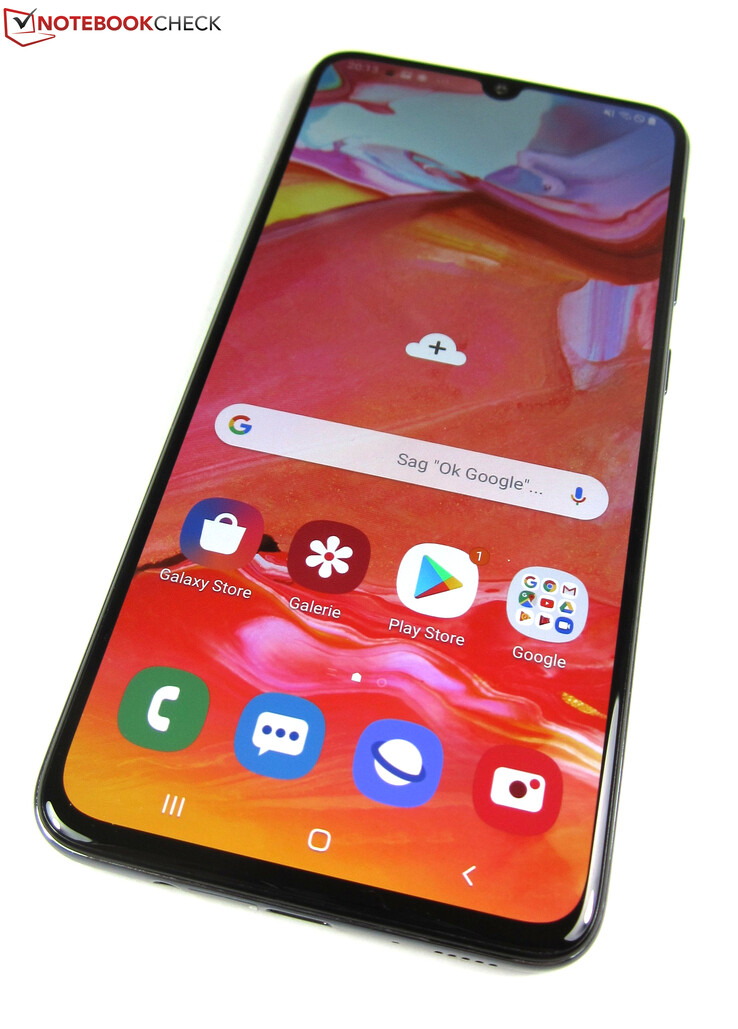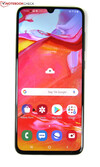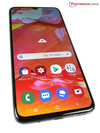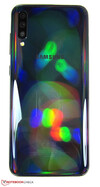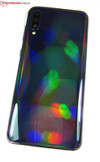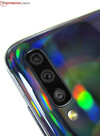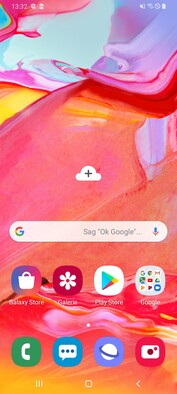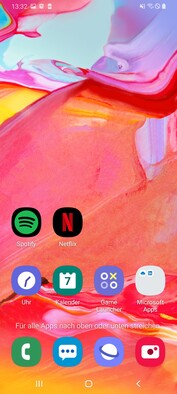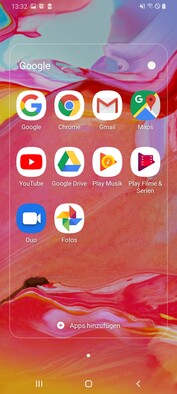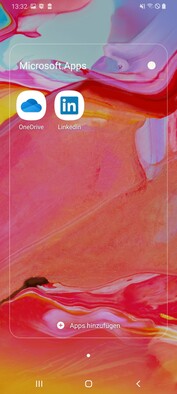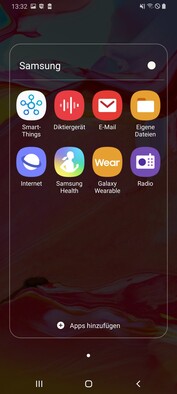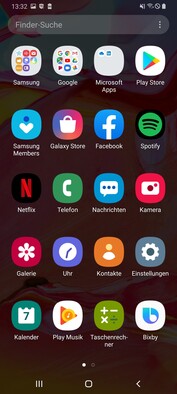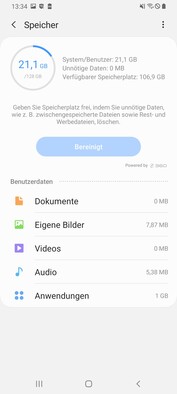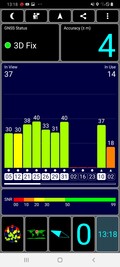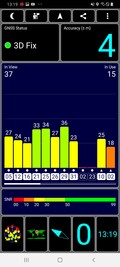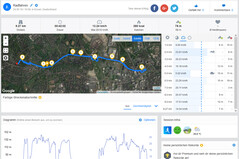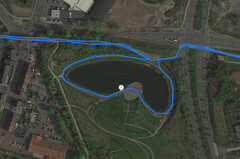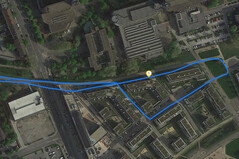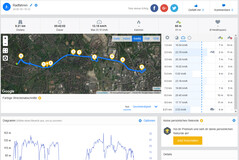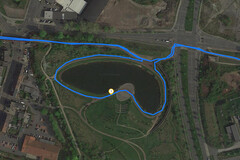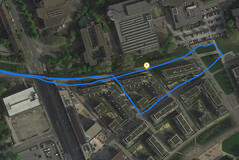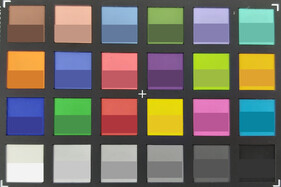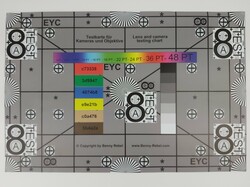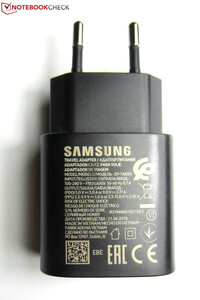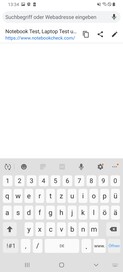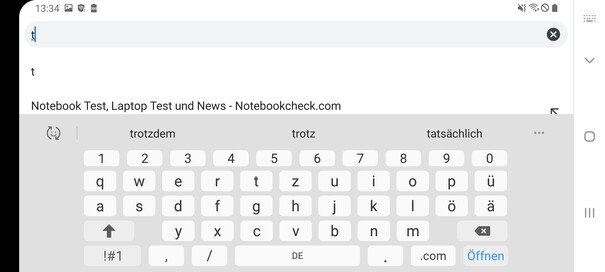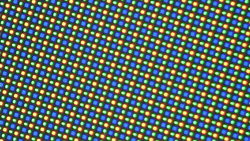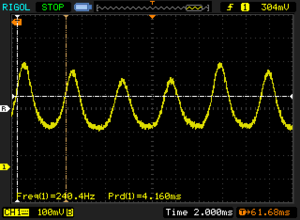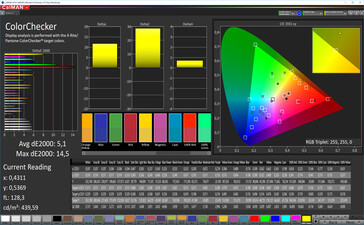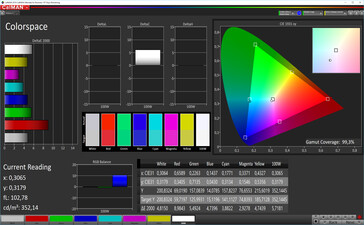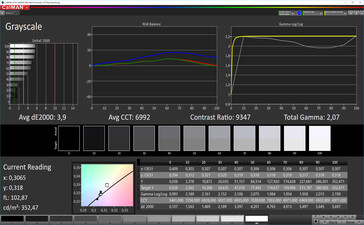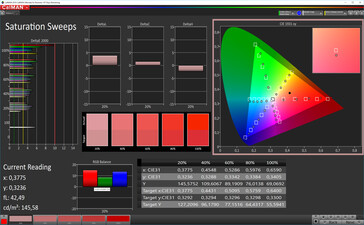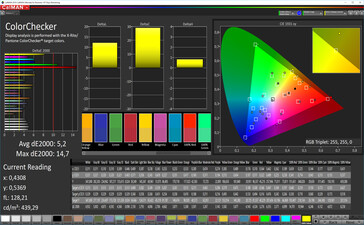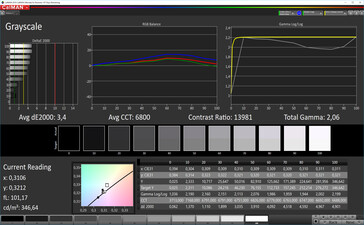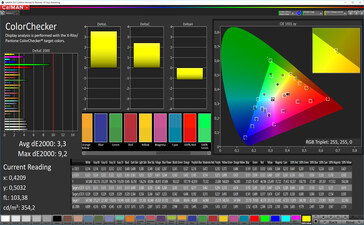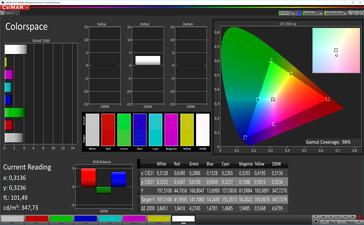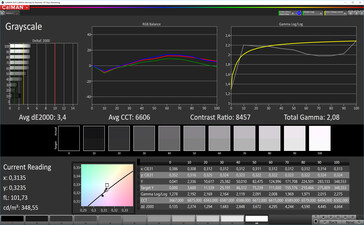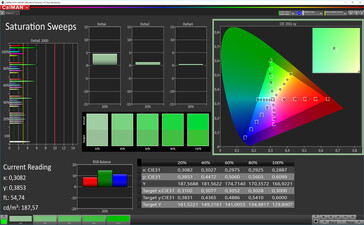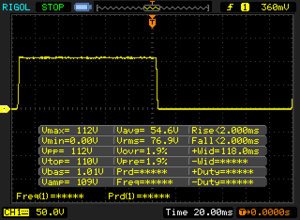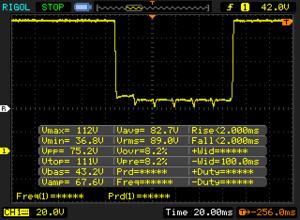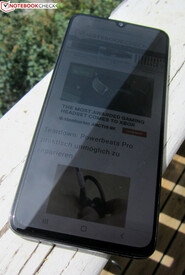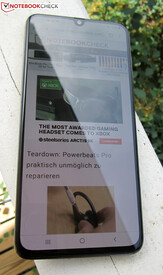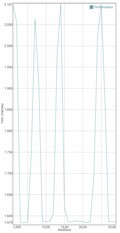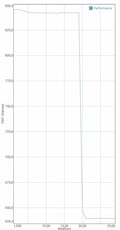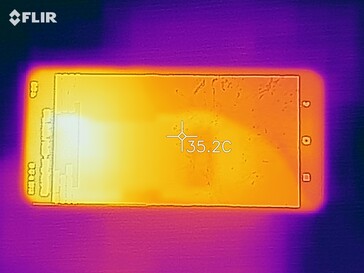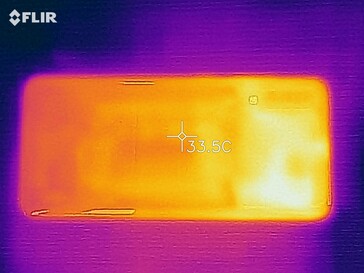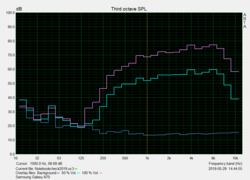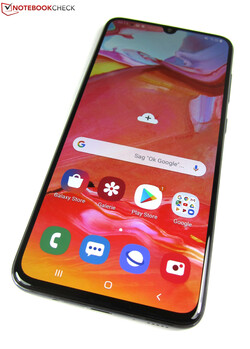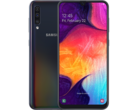Samsung Galaxy A70: Mid-Range Giant in Review
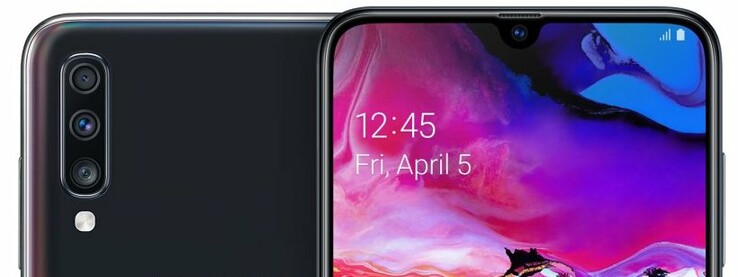
What do Samsung smartphones and cars made by a luxury German carmaker, the one with the star in its hood ornament, have in common? The S-Class is where we find the premium models while the A-Class is much more modest and humble in terms of interior, prestige, and pricing.
It thus seems like the A series would be the smarter choice, but is it not too compromise-ridden and unsophisticated in return? Not if you ask Samsung, at least, because after cancelling the J series, the A series is its new entry-level contender and it is more versatile than ever. This is also true for today’s review unit, the Galaxy A70, which, together with the A80, is the premium model of Samsung’s A series and almost on a par with the S series regarding connectivity.
The Galaxy A70 can be had for around $400, which is not necessarily cheap for a mid-range smartphone but impressive when you take a closer look at the specs. It comes with a 6.7-inch Super AMOLED display with integrated fingerprint reader, 128 GB of internal storage, and a 32 MP triple-camera with ultra-wide-angle and bokeh lens. It is based around the brand-new octa-core Snapdragon 675 SoC, 6 GB of LPDDR4X RAM, and it features a large 4,500 mAh battery.
Let’s find out how well the Galaxy A70 faired against other mid-range smartphones and whether or not it can be a viable alternative to the Galaxy S series of smartphones. For the sake of this review, we chose the following devices to compare it to: Huawei P30 Lite, Sony Xperia 10 Plus, Wiko View 3 Pro, Xiaomi Mi 9 SE, and last but not least its own predecessor, the Galaxy A7 (2018).
Case
At 164.3 x 76.7 mm the Galaxy A70 is quite large due to its 6.7-inch Super AMOLED display. The display itself measures 155.3 x 69.9 mm and fills almost the entire front of the device, meaning that its display bezels are very narrow. It runs at a native resolution of 2400x1080 (FHD+) and has a 20:9 aspect ratio.
Strictly speaking the display is only 6.5 inches in diagonal, courtesy of the rounded corners, and a small notch housing the 32 MP front-facing camera sits at the top of the device and takes up even more screen real estate. However, the display remained fairly spacious, among others due to the integrated in-display fingerprint reader.
The device is available in four colors - black, white, blue, and coral - and it weighs 183 g, which makes it very comfortable to hold. Rigidity was decent, and we were unable to warp or bend the Galaxy A70 by any significant amount. Due to lack of IP certification the device is neither waterproof nor resistant to dust ingress.
Connectivity
The Galaxy A70 sports real dual SIM capabilities and can take two nano SIM cards and a microSD card simultaneously. Regardless of color choice, internal storage is always a spacious 128 GB of UFS storage, and it can be expanded with microSD cards of up to 512 GB. In addition to media files the A70 also allows for offloading apps onto SD storage if supported by the app.
At the bottom next to the USB-C 2.0 port with support for USB-OTG we find a rare sight these days: A full-featured 3.5-mm headphone jack. In addition, the A70 also supports Bluetooth 5.0 with support for aptX, NFC, ANT+, and HD streaming.
Software
The Galaxy A70 runs Android 9.0 with Samsung’s own One UI 1.1 skin. The latter only differs slightly from stock vanilla Android but offers a handful of useful extras, such as a night mode or a dual-messenger feature allowing for two separate accounts for the same app. Samsung’s virtual assistant Bixby is also included in One UI.
Other preloaded software applications include apps made by Samsung, such as the Galaxy Store, Google’s default apps, Microsoft’s OneDrive and LinkedIn, FaceBook, Netflix, and Spotify. LinkedIn and Spotify can be completely removed from the device; the remaining applications can only be disabled. Considering there is an impressive 107 GB of free space out of the box this should not cause any issues.
Communication and GPS
Supported LTE bands include 1, 3, 5, 7, 8, 20, 38, 40, and 41, and the device also supports all common 2G and 3G frequencies. The LTE modem offers LTE Cat. 11 speeds, which means downloads and uploads of up to 600 and 75 Mb/s, respectively.
Unlike Samsung’s S-series (S10 and S10+) the Galaxy A70 does not yet support Wi-Fi 6 but only the older Wi-Fi 5 standard (aka 802.11ac) instead. As our benchmarks have shown, transfer rates were very high and consistent. Sending data the A70 managed 264 Mb/s, receiving data it topped out at 338 Mb/s.
Supported location services include GPS, Glonass, Beidou, and Galileo. GPS lock was obtained fairly quickly both indoors and outdoors at an accuracy of 4 m in both cases.
In order to determine real-world accuracy we take every device on a quick bike tour around the block and compare it to a professional Garmin Edge 500 satnav. All things considered, the Galaxy A70 performed very well and was even more accurate than the Garmin device every now and then, for example at the turning point. In other words: The Galaxy A70 is a superb satnav.
Telephony and Call Quality
Call quality was very decent on both earphone and speakerphone. Voices were always transmitted very clearly without noticeable noise regardless of whether our conversational partner was talking on a landline or a cell phone.
Samsung developed its own telephony app, which includes features such as a dial pad, contacts, and a recents list. The additional places tab turned out to be quite interesting. It lists points of interest in your area with the possibility to call them directly. Places listed on this tab include among others restaurants, shopping and retail outlets, and hotels.
VoLTE is supported for the primary SIM card in slot 1, the one adjacent to the microSD card slot. VoWiFi is supported as well.
Cameras
Samsung’s triple-cam at the back of the Galaxy A70 is impossible to miss. The top lens (1/5.0”, f/2.2) features a 5 MP sensor and is used for bokeh effects. The middle lens (1/2.8”, f/1.7) is the main 32 MP wide-angle camera, and at the bottom we find an 8 MP ultra-wide-angle camera (1/4.0”, f/2.2) with a 123° field of view, which is almost as wide as the average human field of sight. The front-facing webcam features a single 32 MP lens (1/2.8”, f/2.0).
Photos taken in daylight turned out very well and were rich in fine details. However, dynamic range was not as wide as it was on other mid-range smartphones. Take a look at scenes 1 and 2 and compare them to other devices - the A70’s photos seem sort of pale and almost lifeless.
In poor light, such as in scene 3, image quality suffered immensely while color representation remained fairly accurate. The scene was lit up fairly well; however, details are missing all but completely due to excessive noise. The Galaxy A70 is thus not particularly well suited for night-time photography.
Videos are recorded in 4K at 30 FPS or in FHD at 60 FPS. The front-facing camera is limited to 60 FPS. Both cameras feature autofocus, image quality is decent, and both cameras adjusted fairly quickly to sudden changes in lighting.
We also take a closer look at every smartphone camera under normalized conditions in order to evaluate color accuracy and focus by using the X-Rite ColorChecker Passport and our test chart.
Colors and grayscale are not particularly accurate, save for some select whites. Focus is also not exceptionally great, as can be seen on our test chart.
Accessories and Warranty
Included in the box are a modular 25 W fast-charging power supply (up to 9 V/2.77 A or 11 V/2.25 A), a USB cable (Type-C to Type-C), a headset, and a SIM tool.
The only model-specific accessory available at the time of writing was a black wallet cover for around $30. Additional smartphone accessories sold by Samsung include microSD cards, wireless headphones, and smartwatches.
Warranty depends on the country of purchase. While European customers get 24 months of warranty US customers are once again limited to just 12 months.
Input Devices and Handling
The Galaxy A70’s 10-point touchscreen was quick to react and precise, and its surface was comfortably smooth. The only two physical buttons on the phone - the power button and the volume rocker - felt solid and firm with nice and pleasant feedback.
Thanks to a one-handed mode that shrinks the content down, the 6.7-inch smartphone can be easily used accordingly. Unfortunately, the 20:9 display ratio is somewhat bothersome in this regard as we had trouble reaching the very top of the display content even with one-handed mode enabled.
Safety and security features include PIN, pattern, password, fingerprint, and face detection. The integrated in-display fingerprint reader worked very reliably but was not as safe as a dedicated fingerprint reader. Unlocking the phone requires you to look at the device in order to place your finger in the right spot.
The face detection feature was not the safest as it lacked the IR and 3D features that more-expensive smartphones come with. Nevertheless, unlocking the device in the dark worked comparatively well with the display illumination feature enabled.
Display
The Gorilla Glass 3-protected 20:9 6.7-inch Super AMOLED display runs at a native resolution of 2400x1080 (FHD+) resulting in a pixel density of 393 PPI.
Subjectively, the display was not pixelated at all. However, the resulting sharpness was nowhere near that of a more expensive Samsung Galaxy S10 with a much higher resolution. HDR is not mentioned in the display’s specifications.
With a white background maximum display brightness was measured at 552.4 nits. In the APL50 test with evenly distributed black and white surfaces it was even capable of reaching up to 718 nits. On the opposite side of the spectrum minimum brightness was just 1.72 nits, which turned out to be ideal for reading in the dark.
The only downside we found was PWM flickering at 240.4 Hz, a frequency very common for OLED displays. Sensitive users might notice the flickering.
| |||||||||||||||||||||||||
Brightness Distribution: 98 %
Center on Battery: 554 cd/m²
Contrast: ∞:1 (Black: 0 cd/m²)
ΔE Color 3.3 | 0.5-29.43 Ø5
ΔE Greyscale 3.4 | 0.57-98 Ø5.3
98% sRGB (Calman 2D)
Gamma: 2.08
| Samsung Galaxy A70 Super AMOLED, 2400x1080, 6.70 | Huawei P30 Lite IPS LCD, 2312x1080, 6.15 | Sony Xperia 10 Plus IPS, 2520x1080, 6.50 | Wiko View 3 Pro IPS, 2340x1080, 6.30 | Xiaomi Mi 9 SE AMOLED, 2340x1080, 5.97 | Samsung Galaxy A7 2018 Super AMOLED, 2220x1080, 6.00 | |
|---|---|---|---|---|---|---|
| Screen | 15% | -33% | -25% | 23% | 30% | |
| Brightness middle | 554 | 451 -19% | 572 3% | 459 -17% | 583 5% | 570 3% |
| Brightness | 552 | 430 -22% | 580 5% | 450 -18% | 577 5% | 565 2% |
| Brightness Distribution | 98 | 90 -8% | 96 -2% | 90 -8% | 97 -1% | 93 -5% |
| Black Level * | 0.55 | 0.4 | 0.39 | |||
| Colorchecker dE 2000 * | 3.3 | 1.4 58% | 4.5 -36% | 4.8 -45% | 1.6 52% | 1.5 55% |
| Colorchecker dE 2000 max. * | 9.2 | 4.4 52% | 12.2 -33% | 9.2 -0% | 3.9 58% | 3.6 61% |
| Greyscale dE 2000 * | 3.4 | 2.5 26% | 7.9 -132% | 5.5 -62% | 2.7 21% | 1.2 65% |
| Gamma | 2.08 106% | 2.22 99% | 2.16 102% | 2.26 97% | 2.27 97% | 2.07 106% |
| CCT | 6606 98% | 6422 101% | 8726 74% | 7494 87% | 6267 104% | 6504 100% |
| Contrast | 820 | 1430 | 1177 |
* ... smaller is better
Screen Flickering / PWM (Pulse-Width Modulation)
| Screen flickering / PWM detected | 240.4 Hz | ≤ 99 % brightness setting | |
The display backlight flickers at 240.4 Hz (worst case, e.g., utilizing PWM) Flickering detected at a brightness setting of 99 % and below. There should be no flickering or PWM above this brightness setting. The frequency of 240.4 Hz is relatively low, so sensitive users will likely notice flickering and experience eyestrain at the stated brightness setting and below. In comparison: 53 % of all tested devices do not use PWM to dim the display. If PWM was detected, an average of 17900 (minimum: 5 - maximum: 3846000) Hz was measured. | |||
The display settings include options for adjusting colors, including two presets called Lively and Natural, as well as an individually customizable white-balance with a slider that can be freely positioned between cool and warm. The advanced settings even include color temperature settings for each individual RGB channel. We use a spectrophotometer in combination with CalMAN in order to measure and determine color accuracy.
The most accurate color and grayscale representation was achieved with the color profile set to Natural and the white balance set to neutral. When set to Lively, colors were not as accurate anymore but remained acceptable and decent.
Display Response Times
| ↔ Response Time Black to White | ||
|---|---|---|
| 4 ms ... rise ↗ and fall ↘ combined | ↗ 2 ms rise | |
| ↘ 2 ms fall | ||
| The screen shows very fast response rates in our tests and should be very well suited for fast-paced gaming. In comparison, all tested devices range from 0.1 (minimum) to 240 (maximum) ms. » 11 % of all devices are better. This means that the measured response time is better than the average of all tested devices (21.5 ms). | ||
| ↔ Response Time 50% Grey to 80% Grey | ||
| 4 ms ... rise ↗ and fall ↘ combined | ↗ 2 ms rise | |
| ↘ 2 ms fall | ||
| The screen shows very fast response rates in our tests and should be very well suited for fast-paced gaming. In comparison, all tested devices range from 0.2 (minimum) to 636 (maximum) ms. » 10 % of all devices are better. This means that the measured response time is better than the average of all tested devices (33.7 ms). | ||
Thanks to the combination of high brightness, high contrast, and a quick to react ambient light sensor the Galaxy A70’s Super AMOLED display remained very well usable outdoors, except for when it was exposed to direct sunlight (see photo on the left). We did not have any issues in the shade (see photo in the middle).
As expected, viewing angles were superb. Only at very acute angles did brightness decrease slightly, and colors shifted towards blue, neither of which had any impact on readability or usability.
Performance
The Galaxy A70 is powered by the Snapdragon 675 mid-range SoC. Its eight cores are split into four Cortex A76 cores with up to 2 GHz and four Cortex A55 core with up to 1.8 GHz. It is accompanied by an Adreno 612 and 6 GB of LPDDR4X RAM.
According to our synthetic benchmarks, the Galaxy A70 is one of the fastest mid-range smartphones ever made. Among our test group only the Xiaomi Mi 9 SE was capable of keeping up with the A70 and even outperforming it occasionally. The rest of the group, including the Huawei P30 Lite, Samsung Galaxy A7 (2018), Sony Xperia 10 Plus, and Wiko View 3 Pro were slower, although the width of the performance gap depended on the benchmark. In some benchmarks, such as 3DMark of GFXBench, the competitors were relatively close to each other.
| Basemark GPU 1.1 | |
| 1920x1080 Vulkan Medium Offscreen (sort by value) | |
| Samsung Galaxy A70 | |
| Xiaomi Mi 9 SE | |
| Average Qualcomm Snapdragon 675 () | |
| Vulkan Medium Native (sort by value) | |
| Samsung Galaxy A70 | |
| Xiaomi Mi 9 SE | |
| Average Qualcomm Snapdragon 675 () | |
| 1920x1080 OpenGL Medium Offscreen (sort by value) | |
| Samsung Galaxy A70 | |
| Xiaomi Mi 9 SE | |
| Average Qualcomm Snapdragon 675 () | |
| AnTuTu v7 - Total Score (sort by value) | |
| Samsung Galaxy A70 | |
| Huawei P30 Lite | |
| Sony Xperia 10 Plus | |
| Wiko View 3 Pro | |
| Xiaomi Mi 9 SE | |
| Samsung Galaxy A7 2018 | |
| Average Qualcomm Snapdragon 675 (159646 - 167836, n=2) | |
| VRMark - Amber Room (sort by value) | |
| Samsung Galaxy A70 | |
| Xiaomi Mi 9 SE | |
| Average Qualcomm Snapdragon 675 () | |
| Average of class Smartphone (2523 - 10071, n=12, last 2 years) | |
| Basemark ES 3.1 / Metal - offscreen Overall Score (sort by value) | |
| Samsung Galaxy A70 | |
| Xiaomi Mi 9 SE | |
| Average Qualcomm Snapdragon 675 () | |
| Average of class Smartphone (177 - 6114, n=58, last 2 years) | |
The Galaxy A70 performed very well in our browser benchmarks and even outperformed its biggest and most powerful rival, the Xiaomi Mi 9 SE. Subjectively, it felt very fast, snappy, and smooth when browsing the web.
| Jetstream 2 - Total Score | |
| Average of class Smartphone (13.8 - 351, n=173, last 2 years) | |
| Average Qualcomm Snapdragon 675 (43.4 - 44.9, n=2) | |
| Samsung Galaxy A70 (Chrome 74.0.3729.157) | |
| Xiaomi Mi 9 SE (Chrome 73) | |
| Huawei P30 Lite (Chrome 74) | |
| Sony Xperia 10 Plus (Chrome 73) | |
| Speedometer 2.0 - Result | |
| Average of class Smartphone (14.9 - 445, n=157, last 2 years) | |
| Samsung Galaxy A70 (Chrome 74.0.3729.157) | |
| Average Qualcomm Snapdragon 675 () | |
| Xiaomi Mi 9 SE (Chrome 73) | |
| Huawei P30 Lite (Chrome 74) | |
| Sony Xperia 10 Plus (Chrome 73) | |
| WebXPRT 3 - Overall | |
| Average of class Smartphone (39 - 304, n=122, last 2 years) | |
| Samsung Galaxy A70 (Chrome 74.0.3729.157) | |
| Average Qualcomm Snapdragon 675 (70 - 82, n=2) | |
| Xiaomi Mi 9 SE (Chrome 73) | |
| Huawei P30 Lite (Chrome 74) | |
| Samsung Galaxy A7 2018 (Chrome 70) | |
| Sony Xperia 10 Plus (Chrome 73) | |
| Wiko View 3 Pro (Chrome 74) | |
| Octane V2 - Total Score | |
| Average of class Smartphone (4633 - 89112, n=212, last 2 years) | |
| Samsung Galaxy A70 (Chrome 74.0.3729.157) | |
| Average Qualcomm Snapdragon 675 (15689 - 15716, n=2) | |
| Xiaomi Mi 9 SE (Chrome 73) | |
| Huawei P30 Lite (Chrome 74) | |
| Samsung Galaxy A7 2018 (Chrome 70) | |
| Wiko View 3 Pro (Chrome 74) | |
| Sony Xperia 10 Plus (Chrome 73) | |
| Mozilla Kraken 1.1 - Total | |
| Sony Xperia 10 Plus (Chrome 73) | |
| Wiko View 3 Pro (Chrome 74) | |
| Huawei P30 Lite (Chrome 74) | |
| Samsung Galaxy A7 2018 (Chrome 70) | |
| Xiaomi Mi 9 SE (Chrome 73) | |
| Average Qualcomm Snapdragon 675 (2807 - 2890, n=2) | |
| Samsung Galaxy A70 (Chrome 74.0.3729.157) | |
| Average of class Smartphone (388 - 9999, n=173, last 2 years) | |
* ... smaller is better
In our storage benchmarks, the A70 reached up to 508 MB/s in sequential and up to 104 MB/s in 4K reads. Accordingly, it shares first place with the Xiaomi Mi 9 SE. The only other device even remotely capable of keeping up was the Huawei P30 Lite, although it only managed to do so in 4K random writes in which it offered an exceptional level of performance.
Card-reader performance was comparable on all devices in our test group, and the A70’s card reader was capable of writing at up to 60 MB/s and reading at up to 80 MB/s.
| Samsung Galaxy A70 | Huawei P30 Lite | Sony Xperia 10 Plus | Wiko View 3 Pro | Xiaomi Mi 9 SE | Samsung Galaxy A7 2018 | Average 128 GB UFS 2.0 Flash | Average of class Smartphone | |
|---|---|---|---|---|---|---|---|---|
| AndroBench 3-5 | 37% | -13% | -3% | 2% | -21% | 63% | 486% | |
| Sequential Read 256KB | 508 | 293.2 -42% | 280.3 -45% | 302.7 -40% | 492.5 -3% | 295.8 -42% | 530 ? 4% | 1502 ? 196% |
| Sequential Write 256KB | 194 | 158.6 -18% | 205.2 6% | 171.6 -12% | 190.1 -2% | 104.9 -46% | 215 ? 11% | 1111 ? 473% |
| Random Read 4KB | 103.8 | 71.6 -31% | 77.7 -25% | 89.7 -14% | 115.8 12% | 84 -19% | 129.6 ? 25% | 247 ? 138% |
| Random Write 4KB | 21.95 | 87.3 298% | 16.77 -24% | 31.2 42% | 21.86 0% | 15.45 -30% | 100.7 ? 359% | 271 ? 1135% |
| Sequential Read 256KB SDCard | 76.2 ? | 76.8 ? 1% | 83.9 ? 10% | 77.4 ? 2% | 78.2 ? 3% | 68.3 ? -10% | ||
| Sequential Write 256KB SDCard | 58.8 ? | 67.8 ? 15% | 58.4 ? -1% | 60.5 ? 3% | 64.4 ? 10% | 53.2 ? -10% |
Gaming
The included Adreno 612 is a mid-range GPU that won’t transform the A70 into a gaming beast. Older and less-demanding games, such as Dead Trigger 2 or Shadow Fight 3, ran very smoothly even in high details and rarely ever dropped below 60 FPS. However, more current games such as Asphalt 9 can quickly bring your gaming experience to a screeching halt, as we were able to determine using Gamebench.
Even in low settings (standard) Asphalt 9 was incapable of reaching more than 20 FPS on average, which decreased even further to just 16 FPS in high details. We also had issues running PUBG Mobile and were unable to even install the game as the download was cancelled shortly before it was about to complete with an error message every single time we attempted to install it.
Another issue was the soundscape produced by the A70. Granted, this will not be a deal-breaker for most users, but we highly recommend using headphones. The smartphone’s single speaker resulted in sound coming either from the left or right when the device was held in portrait mode.
Asphalt 9 (High)
Asphalt 9 (Standard)
Shadow Fight 3
Dead Trigger 2
Emissions
Temperature
Under load, the Galaxy A70 got noticeably warm around the triple-camera at the rear but never uncomfortably so. More importantly it never got too warm to be held in hand. A maximum of 37.4 °C means it remained comfortable to hold at all times. Surface temperatures when idle hovered around 30 °C.
When running GFXBench’s battery test we noticed that the Galaxy A70 was incapable of maintaining a consistent level of performance over long times due to high internal temperatures. In both tests, T-Rex as well as the more demanding Manhattan, performance decreased significantly over the course of 30 reruns.
(+) The maximum temperature on the upper side is 37.4 °C / 99 F, compared to the average of 35 °C / 95 F, ranging from 21.9 to 56 °C for the class Smartphone.
(+) The bottom heats up to a maximum of 36 °C / 97 F, compared to the average of 33.8 °C / 93 F
(+) In idle usage, the average temperature for the upper side is 30 °C / 86 F, compared to the device average of 32.7 °C / 91 F.
Speakers
The Galaxy A70’s single speaker sits at the bottom right next to the USB-C port. At 85.3 dB(A) it gets comparatively loud. However, as is very common for smartphones, it produced a soundscape devoid of any bass with well-balanced mids and highs in return.
The speaker was good enough for listening to media files or playing games. However, using external speakers or headphones will drastically improve your audio experience. The device supports connectivity either via 3.5-mm headphone jack or Bluetooth 5.0 with aptX.
Samsung Galaxy A70 audio analysis
(+) | speakers can play relatively loud (85.3 dB)
Bass 100 - 315 Hz
(-) | nearly no bass - on average 33.5% lower than median
(±) | linearity of bass is average (13.1% delta to prev. frequency)
Mids 400 - 2000 Hz
(+) | balanced mids - only 3.7% away from median
(+) | mids are linear (4.5% delta to prev. frequency)
Highs 2 - 16 kHz
(±) | higher highs - on average 6.2% higher than median
(+) | highs are linear (3.6% delta to prev. frequency)
Overall 100 - 16.000 Hz
(±) | linearity of overall sound is average (22.9% difference to median)
Compared to same class
» 44% of all tested devices in this class were better, 7% similar, 49% worse
» The best had a delta of 12%, average was 38%, worst was 134%
Compared to all devices tested
» 63% of all tested devices were better, 6% similar, 31% worse
» The best had a delta of 4%, average was 25%, worst was 134%
Samsung Galaxy A7 2018 audio analysis
(+) | speakers can play relatively loud (85.5 dB)
Bass 100 - 315 Hz
(-) | nearly no bass - on average 27.5% lower than median
(±) | linearity of bass is average (10.4% delta to prev. frequency)
Mids 400 - 2000 Hz
(+) | balanced mids - only 3.6% away from median
(+) | mids are linear (4.8% delta to prev. frequency)
Highs 2 - 16 kHz
(±) | higher highs - on average 8.2% higher than median
(+) | highs are linear (3.3% delta to prev. frequency)
Overall 100 - 16.000 Hz
(±) | linearity of overall sound is average (22.3% difference to median)
Compared to same class
» 40% of all tested devices in this class were better, 7% similar, 53% worse
» The best had a delta of 12%, average was 38%, worst was 134%
Compared to all devices tested
» 60% of all tested devices were better, 7% similar, 34% worse
» The best had a delta of 4%, average was 25%, worst was 134%
Battery Life
Power Consumption
All things considered, the A70 was very efficient. When idle, its power consumption was around 1.69 W. Under load, this increased to just 3.42 W. The only device even more efficient was Xiaomi's Mi 9 SE. The device with the highest power consumption in our test group was Huawei's P30 Lite.
| Off / Standby | |
| Idle | |
| Load |
|
| Samsung Galaxy A70 4500 mAh | Huawei P30 Lite 3340 mAh | Sony Xperia 10 Plus 3000 mAh | Wiko View 3 Pro 4000 mAh | Xiaomi Mi 9 SE 3070 mAh | Samsung Galaxy A7 2018 3300 mAh | Average Qualcomm Snapdragon 675 | Average of class Smartphone | |
|---|---|---|---|---|---|---|---|---|
| Power Consumption | -36% | -14% | 0% | 22% | -11% | -6% | -23% | |
| Idle Minimum * | 0.66 | 0.91 -38% | 0.68 -3% | 0.77 -17% | 0.53 20% | 0.71 -8% | 0.693 ? -5% | 0.897 ? -36% |
| Idle Average * | 1.69 | 2.41 -43% | 2.12 -25% | 1.79 -6% | 1.18 30% | 1.36 20% | 1.8 ? -7% | 1.452 ? 14% |
| Idle Maximum * | 1.8 | 2.43 -35% | 2.17 -21% | 1.86 -3% | 1.2 33% | 1.47 18% | 1.867 ? -4% | 1.629 ? 9% |
| Load Average * | 3.42 | 4.57 -34% | 3.82 -12% | 2.74 20% | 3.04 11% | 5.13 -50% | 4.03 ? -18% | 5.55 ? -62% |
| Load Maximum * | 5.88 | 7.57 -29% | 6.44 -10% | 5.53 6% | 4.83 18% | 7.89 -34% | 5.63 ? 4% | 8.31 ? -41% |
* ... smaller is better
Battery Life
A low power consumption combined with a massive 4,500 mAh battery are the perfect ingredients for a long battery life, and the Galaxy A70 certainly didn't disappoint in this regard. Unfortunately, it was not the marathon runner we expected it to be either. Nevertheless, it was the device with the longest overall battery life in our test group.
In our web-browsing test it lasted for slightly more than 12 hours only to be outperformed by the Wiko View 3 Pro. In our video playback test, in which we play an H.264-encoded short file in a loop, it powered off after an impressive 18 hours.
Charging was a very short and painless matter. When using the included 25 W charger the battery was charged from near empty to full in less than two hours (1:50 h, to be precise).
| Samsung Galaxy A70 4500 mAh | Huawei P30 Lite 3340 mAh | Sony Xperia 10 Plus 3000 mAh | Wiko View 3 Pro 4000 mAh | Xiaomi Mi 9 SE 3070 mAh | Samsung Galaxy A7 2018 3300 mAh | |
|---|---|---|---|---|---|---|
| Battery Runtime | -34% | -33% | 20% | -27% | -18% | |
| Reader / Idle | 2600 | 1248 -52% | 1400 -46% | 1374 -47% | 1467 -44% | |
| H.264 | 1117 | 685 -39% | 701 -37% | 853 -24% | 836 -25% | |
| WiFi v1.3 | 736 | 515 -30% | 635 -14% | 886 20% | 510 -31% | 605 -18% |
| Load | 233 | 198 -15% | 154 -34% | 218 -6% | 273 17% |
Pros
Cons
Verdict
Samsung’s Galaxy A70 is a decent smartphone. However, it will have a very hard time standing out among the huge variety of mid-range smartphones despite its impressive hardware.
Its sleek case with the 6.7-inch large 20:9 high-resolution Super AMOLED display is certainly a big plus, as are its connectivity features, its long battery life, its dual SIM capabilities, and its spacious internal storage.
Great hardware with mediocre performance and camera quality - we expect more of a $400 smartphone.
This brings us to its downsides. The A70’s performance is decent enough for everyday applications and tasks; however, it is too slow for current games. At its price point of roughly $400 we would have expected more of the A70. The triple-camera was also somewhat disappointing as it turned out to be decent enough only in bright daylight.
A good alternative to Samsung’s Galaxy A70 is Xiaomi's Mi 9 SE. With its 5.97-inch AMOLED display it might be a tad smaller, however it is cheaper, faster, and offers a better triple-camera system to boot.
Samsung Galaxy A70
-
06/14/2019 v6(old)
Manuel Masiero


 Deutsch
Deutsch English
English Español
Español Français
Français Italiano
Italiano Nederlands
Nederlands Polski
Polski Português
Português Русский
Русский Türkçe
Türkçe Svenska
Svenska Chinese
Chinese Magyar
Magyar